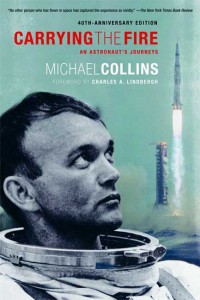This isn’t a lighthearted post, so feel free to look elsewhere if you’re not in a serious/reflective mood.
When looking at successful people (be it Olympic gold medalists or, as in this case, astronauts), it’s often easy to overlook everything that has enabled these people to succeed—their hard work, certainly, but also all of the support they have received, be it from coaches, friends, or family. So today, I want to talk a little about an astronaut’s support system, in particular his/her family.
Before Chris Hadfield’s latest launch, his son, Evan, wrote a great piece, called “The final frontier of a son’s awe – and abject fear,” on his experience as the son of an astronaut. Although Evan does talk about some of the cool perks of being an astronaut’s child (eating dinner with the governor-general in Paris, running into Neil Armstrong at the dentist’s office, etc.), the overall message is more somber.
Evan points to the Columbia disaster (where the space shuttle Columbia disintegrated as it re-entered the atmosphere, killing all seven astronauts on board) as the turning point where he went beyond looking at just the dangers of his father’s job to the long-term effects these dangers could bring to him and his family. Essentially, Evan talks about how terrible it would be for his father to die while in space—not solely because of his death (everyone knows that astronauts’ jobs are dangerous), but more so because of the media and publicity that would follow.
Here’s a fairly long chunk of the article that really drives home Evan’s point:
If [my father] doesn’t make it back to Earth, someone will shove a camera in my mother’s face and ask her to comment on her husband’s death. He will be called a hero, mythologized. Once that gets old, the media will slowly humanize him, picking apart any faults they can dig up. Someone will make a documentary. The Internet will be awash with macabre jokes. Everyone I meet from then on will have watched my father die.
If my father dies doing his job…I won’t just have to watch him explode before my eyes, I’ll have to see him explode on TV over and over and over again. Pundits will declare that he died for nothing, that NASA is a waste of money. His official 4×4 will make the covers of magazines, along with headlines like “The death of a hero” and “The end of NASA?” My family will have fresh reminders for decades to come, as people find reasons to turn his death into a topic of conversation. We will never be allowed to let go.
So my fear isn’t really that my dad is going to die. Everyone’s dad dies. My fear is that he won’t die once but a thousand times, with a million people talking about him as though he were a concept instead of a man.
Astronauts’ families clearly have to give up a lot, and they clearly have a lot to lose. Before every launch, every astronaut appoints two “family escorts,” two astronauts not currently training for a mission to act as “surrogate spouses” during launch and beyond. One family escort takes care of extended family and friends at the launch, and another looks after the immediate family. While these escorts are mostly there to help manage some of the stress that comes along with launch day, there is always a more serious side to consider.
According to Chris Hadfield’s autobiography, “when you’re choosing a family escort, you don’t just consider which astronaut is most likely to be able to smile and nod when Aunt Ruby gets going on one of her political rants. Mostly, you think about which astronaut you’d want standing next to your spouse if your own rocket blew up, in which case the family escort would need to stand there for months or even years” (151). Astronauts have to think about this, because their jobs are dangerous. After the Columbia disaster, the family escorts stepped in to support the dead astronauts’ families not only at the funeral but also later by “helping to set up educational trust funds for the kids and advocating for the family during the accident investigation” (152).
Astronauts do what they do despite the dangers because they truly believe that what they are working for exceeds the risks. They are lucky to have the support of their families and other astronauts not only during the darkest hours, but also in their “everyday” lives. And in the end, the families are pretty lucky to have their astronauts as well. Because as Evan puts it in his final line, “Yes, I’m terrified. But I couldn’t be more proud.”





